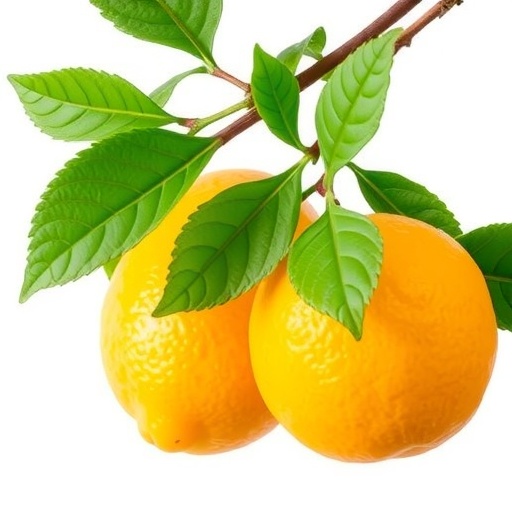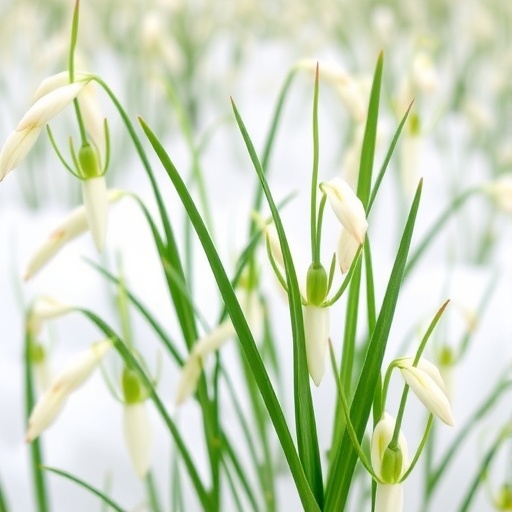
In a groundbreaking study published in the highly regarded journal BMC Genomics, researchers led by S. Ramekar, L.M. Mahmoud, and J.K. Deol delve into the critical challenges posed by Huanglongbing (HLB), a devastating disease affecting citrus crops. This research explores innovative biochemical and molecular strategies aimed at enhancing the tolerance of Citrus australis hybrids to HLB. The implications of this study could pave the way for transforming the citrus industry, which is under constant threat from disease outbreaks.
Huanglongbing, often referred to as citrus greening disease, is caused by a complex interplay of factors including bacterial infections and vector dynamics. The disease is notorious for its ability to decimate entire orchards, leading to significant economic losses for growers worldwide. The urgency in combating this disease has never been greater, as it poses a serious challenge to global food security and agricultural sustainability.
The study meticulously examines the biochemical pathways and molecular responses that characterize HLB tolerance in Citrus australis hybrids. Through advanced genomic techniques, the researchers identified key genes and proteins that play pivotal roles in the plant’s defense mechanisms against HLB. This insight is crucial, as it not only enhances our understanding of citrus plant biology but also provides a foundation for developing resilient hybrid varieties that can withstand the pressures of this debilitating disease.
The research team employed a multifaceted approach, incorporating both field studies and laboratory experiments to assess the performance of Citrus australis hybrids under HLB stress conditions. The use of controlled environments allowed for the precise measurement of physiological responses, while field trials provided real-world insights. Such a comprehensive methodology ensures that the findings are both robust and applicable to practical scenarios faced by citrus producers.
In addition to identifying resistant traits, the study highlights the significance of metabolomic analyses in understanding plant responses to HLB. By analyzing secondary metabolites produced by the plants, the researchers made valuable connections between metabolic profiles and HLB tolerance. These metabolites may serve as natural compounds that bolster the plant’s defense strategies, suggesting pathways for bioengineering more resilient citrus varieties.
Moreover, the study delves into the role of epigenetic modifications in the development of HLB tolerance. It posits that changes in gene expression, facilitated by environmental cues, can lead to enhanced resistance. This revelation opens up exciting avenues for research, as epigenetic mechanisms could be targeted for manipulating gene expression in future hybrid breeding programs.
As researchers grapple with the challenges of climate change and emerging plant pathogens, the need for sustainable agricultural practices becomes increasingly clear. The findings from this study underscore the importance of adopting integrated pest management systems that incorporate molecular breeding techniques and biochemical insights. By combining traditional cultivation methods with cutting-edge science, farmers can better defend their crops against HLB and similar threats.
Economic implications cannot be overlooked. The citrus industry is worth billions, and the repercussions of HLB on global citrus production touch many aspects of the agricultural ecosystem. From local communities dependent on citrus farming for their livelihoods to consumers seeking fresh produce, the ripple effects of HLB are far-reaching. The development of HLB-tolerant hybrids is not just a scientific endeavor—it is a crucial step toward safeguarding agricultural integrity.
Collaboration across the scientific community plays a vital role in addressing multifaceted challenges like HLB. This study exemplifies how interdisciplinary approaches can yield significant advancements in disease management. By pooling resources, knowledge, and expertise, researchers can accelerate the discovery of solutions that hold promise not only for citrus crops but also for a range of other vulnerable agricultural commodities.
In conclusion, the research conducted by Ramekar, Mahmoud, and Deol marks a significant milestone in the quest to combat Huanglongbing disease. The detailed exploration of metabolic pathways, gene expression, and hybrid resilience provides hope for the development of a more stable citrus industry. The findings from this research could serve as a blueprint for future studies aimed at enhancing plant resilience in the face of global agricultural challenges.
As the results ripple through the agricultural sector, it is essential for stakeholders—ranging from policymakers to farmers—to remain informed and engaged. The fight against HLB requires a collective effort, and the insights gleaned from this study could shape the future of citrus cultivation for generations to come. The urgency to act is palpable, and with continued research and collaboration, there is a pathway forward to protect one of the world’s most cherished fruit crops.
In summary, this research not only alters our academic perspective on HLB but inspires a broader conversation about the intersection of science, agriculture, and sustainability. The commitment to understanding the complexities of plant biology exemplified in this study could well define the 21st century’s approach to agriculture amid the looming threats of plant diseases and climate variability.
Subject of Research: Biochemical and molecular mechanisms contributing to Huanglongbing tolerance in Citrus australis hybrids.
Article Title: Exploring the biochemical and molecular mechanisms that contribute to Huanglongbing (HLB) tolerance in Citrus australis hybrids.
Article References:
Ramekar, S., Mahmoud, L.M., Deol, J.K. et al. Exploring the biochemical and molecular mechanisms that contribute to Huanglongbing (HLB) tolerance in Citrus australis hybrids. BMC Genomics 26, 761 (2025). https://doi.org/10.1186/s12864-025-11942-x
Image Credits: AI Generated
DOI: 10.1186/s12864-025-11942-x
Keywords: Huanglongbing, Citrus australis, molecular mechanisms, biochemical pathways, plant resilience, disease tolerance, citrus agriculture, metabolic profiles, epigenetics, genomic techniques.
Tags: agricultural sustainability and food securitybacterial infections in citrus cropsbiochemical pathways in plantsCitrus australis hybrids tolerancecitrus industry challengeseconomic impact of citrus greeninggenomic techniques in agricultureHuanglongbing disease in citrusinnovative strategies for crop protectionmolecular responses to HLBplant defense mechanisms against diseasesvector dynamics in HLB transmission




